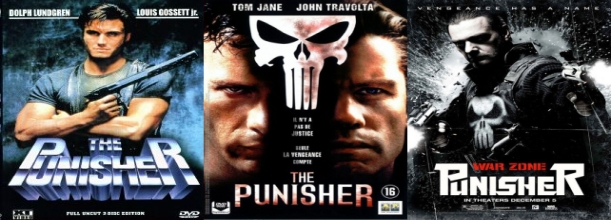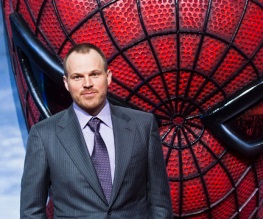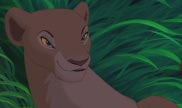Six Fads That Are Arguably Stunting Cinema

Having already chronicled the recent slew of dramatic doppelgängers – whereby cinematic doubles litter cinemas, often separated by mere months – I cannot quite shake the suspicion that the issue runs deeper than mere surface similarities between two or three films. I love cinema, and it hurts me to watch the same movies being regurgitated on a near-yearly basis. I’m not angry, I’m just disappointed.
This year’s biggest releases read like a carbon copy check-list of every year thus far this decade. We have a wealth of superhero movies, a run of vampire films and an array of sex-comedies, each treading on the toes of whatever came before. On top of the genre staples there are also the usual regurgitations (who exactly was calling out for another Arthur film?), the ongoing search for a new Harry Potter (anyone ever remember I Am Number 4? No, I thought not) and the typical onslaught of sequels, prequels and English language adaptations (for which, if Wikipedia is to be believed, this is a record year). What follows is a trend by trend analysis of the creativity-zapping paths of least resistances characterising Hollywood today.
Part II: The Squeakquel
 Cinematic sequels are hardly a recent phenomenon, dating back as they do to 1916’s Fall of a Nation, but with 27 sequels set to début this year alone (some constituting the fifth or even eighth instalment) they have become depressingly ubiquitous. While the tendency towards sequels can sometimes have little detriment on film quality – along with the often cited Godfather 2 and Star Wars Episode V: The Empire Strikes Back, there are a great many other sequels of worth – the law of diminishing returns has claimed a great many more franchises than it has spared.
Cinematic sequels are hardly a recent phenomenon, dating back as they do to 1916’s Fall of a Nation, but with 27 sequels set to début this year alone (some constituting the fifth or even eighth instalment) they have become depressingly ubiquitous. While the tendency towards sequels can sometimes have little detriment on film quality – along with the often cited Godfather 2 and Star Wars Episode V: The Empire Strikes Back, there are a great many other sequels of worth – the law of diminishing returns has claimed a great many more franchises than it has spared.
The problem is not only the lack of ideas by episode sixteen (I for one rather enjoyed Kingdom of the Crystal Skull, Fast Five and Scream 4), but the fact that sequels are often greenlit for their own sake as opposed to being the consequence of an ongoing saga in need of additional instalments to best tell its tale. As such we have seven Saw movies, ten Star Trek movies (pre-reboot) and a Land Before Time series that has lasted almost as long as the dinosaurs themselves. Nobody was begging for a second Cars movie, a Planet of the Apes prequel or a fifth Final Destination. As for Hoodwinked II: Hood vs. Evil – there was a Hoodwinked I??
Retcons, remakes and reimaginings
 Although many sequels are undoubtedly commissioned to capitalise on the fiscal benefits of our essential laziness and brand loyalty, at some point the costs of constantly ramping up the excitement/action/breasts will outweigh the benefits. Luckily, there still remains an attractive alternative to dreaming up new ideas: the reboot. I understand why it happens – hell, I can even quote a couple of worthwhile films which were themselves reboots – but that doesn’t help curb the suspicion that this is one of the most dangerous avenues of moviemaking.
Although many sequels are undoubtedly commissioned to capitalise on the fiscal benefits of our essential laziness and brand loyalty, at some point the costs of constantly ramping up the excitement/action/breasts will outweigh the benefits. Luckily, there still remains an attractive alternative to dreaming up new ideas: the reboot. I understand why it happens – hell, I can even quote a couple of worthwhile films which were themselves reboots – but that doesn’t help curb the suspicion that this is one of the most dangerous avenues of moviemaking.
Rather than simply recasting the roles and renewing their focus on character and plot, many studios are instead deciding to start from scratch, effectively scrapping everything that came before and making a mockery of any time, money and fanboyism wasted in that particular world. While this is true of just about every horror movie released before the turn of the century (and many after), it is particularly common for superheroes to drop everything in a hurry to return to square one. The Hulk will have effectively started over three times by the release of The Avengers, The Punisher has already managed his hat-trick, while Spider-man barely lasted five years before being unceremoniously rebooted. Surely it would make more sense to follow James Bond, Doctor Who and 90s Batman‘s example, continuing the narrative regardless of cast and crew changes?
Adapt or die
 It is not just existing films which prove an irresistible counter to originality in the Hollywood hills, as literally anything can form the basis for a box-office busting cinema franchise, with novels, games and even boardgames and theme park rides offering inspiration for willing film studios. As Dan Brown, Stephenie Meyer, Nicholas Sparks and the Brothers Grimm find themselves relentlessly tapped for stories (of varying quality…), JK Rowling and J R Tolkein have unwittingly spawned two of the most lucrative and influential film franchises in history.
It is not just existing films which prove an irresistible counter to originality in the Hollywood hills, as literally anything can form the basis for a box-office busting cinema franchise, with novels, games and even boardgames and theme park rides offering inspiration for willing film studios. As Dan Brown, Stephenie Meyer, Nicholas Sparks and the Brothers Grimm find themselves relentlessly tapped for stories (of varying quality…), JK Rowling and J R Tolkein have unwittingly spawned two of the most lucrative and influential film franchises in history.
As such we have an onslaught of doppelgängers invading cinemas as rival studios abuse the Polyjuice potion in search of a hit. Over recent years a number of grandiose sword and sandal epics have trudged through auditoriums in search of an heir to these literary thrones, because let’s face it: what audiences really need is another vampire movie. Novelists have aptly risen to the challenge too, as The Golden Compass, Eragon, The Chronicles of Narnia, The Spiderwick Chronicles, Cirque du Freak: The Vampire Assistant, Percy Jackson and the Olympians: The Lightning Thief and the aforementioned I Am Number Four duly auction themselves off to the highest bidder.
Eye-popping, wallet-emptying 3D
 As a recovering 3D apologist, I diligently dropped my jaw at Avatar and championed Thor 3D over Thor 2D. Over the past couple of months, however, I have found it increasingly difficult to defend the medium following a slew of sub-par conversion jobs which suffered the 30% colour loss caused by the tinted glasses without benefiting from the visual splendour the effect makes possible. Following the success of Avatar – and the genuine majesty of films such as DreamWorks’ How to Train Your Dragon – many studios made the mistake of pinning the responsibility on 3D alone.
As a recovering 3D apologist, I diligently dropped my jaw at Avatar and championed Thor 3D over Thor 2D. Over the past couple of months, however, I have found it increasingly difficult to defend the medium following a slew of sub-par conversion jobs which suffered the 30% colour loss caused by the tinted glasses without benefiting from the visual splendour the effect makes possible. Following the success of Avatar – and the genuine majesty of films such as DreamWorks’ How to Train Your Dragon – many studios made the mistake of pinning the responsibility on 3D alone.
The last few years have played host to films such as The Final Destination, The Last Airbender, Clash of the Titans, Cats and Dogs 2: The Revenge of Kitty Galore, The Green Hornet, Green Lantern, Transformers: Dark of the Moon and Harry Potter and the Deathly Hallows: Part II (not a comment on the latter film’s quality), each poorly converted into 3D during post production. Even films filmed in the medium are often sequels, the previous instalments hardly calling for an extra dimensional make-over.
The witless comedy
 I understand that it’s about time the romantic comedy is modified to appeal to both sides of the gender divide, but of late the longstanding tradition of wit and even jokes have been unceremoniously relegated to the realm of science fiction and fantasy. Where the comedy genre was once home to the likes of Charlie Chaplin, Leslie Nielsen, Jim Carrey, Hugh Grant and the Monty Python team, modern comedy can generally be divided into three, equally uninspiring camps: the Judd Apatow bromance, the sex comedy and the Spoof Comedy Movie.
I understand that it’s about time the romantic comedy is modified to appeal to both sides of the gender divide, but of late the longstanding tradition of wit and even jokes have been unceremoniously relegated to the realm of science fiction and fantasy. Where the comedy genre was once home to the likes of Charlie Chaplin, Leslie Nielsen, Jim Carrey, Hugh Grant and the Monty Python team, modern comedy can generally be divided into three, equally uninspiring camps: the Judd Apatow bromance, the sex comedy and the Spoof Comedy Movie.
I have never been a particularly enthusiastic comedy buff, but lately I have been even less tempted to watch the genre’s latest offerings. Either Adam Sandler, Seth Rogen, Jack Black, Zach Galifianakis or Will Ferrell (or now Melissa McCarthy) will greet me with some quirkily random slab of nonsense, a former That 70s Show star will land a fuck-buddy or one member of the Wayan family will try (and fail) to lampoon everything that moves.
Darker is better
 It is this fad above all others which has become the bane of my life, often appearing as it does in tandem with the inevitable reboot. The last few years have been plagued with announcements of long-running franchises facing reincarnation as part of a relentless drive to rob cinemas of anything light and fluffy. Arguably started by the Nolanisation of Batman, this trend has devoured just about every superhero franchise going: Spider-Man, Fantastic Four, Daredevil and Hulk have each fallen victim to the disdain shown towards anything that doesn’t growl or lurk in the shadows.
It is this fad above all others which has become the bane of my life, often appearing as it does in tandem with the inevitable reboot. The last few years have been plagued with announcements of long-running franchises facing reincarnation as part of a relentless drive to rob cinemas of anything light and fluffy. Arguably started by the Nolanisation of Batman, this trend has devoured just about every superhero franchise going: Spider-Man, Fantastic Four, Daredevil and Hulk have each fallen victim to the disdain shown towards anything that doesn’t growl or lurk in the shadows.
It’s also worth noting that this is pushing the boundaries of the 12A rating beyond breaking point. Whether it is The Dark Knight‘s pathalogical moral paradigms or Harry Potter’s suffering at the hands of Voldemort, it’s increasingly difficult to work out what differentiates the lower certificates, opening more and more productions up to the limited attention spans of the younger generation. Aside from this, there is a relative dearth in variety when it comes to your superhero affiliations. Only Marvel seem to be above the rampant pursuit of realism (Green Lantern probably did more harm than good) – their lighthearted and unashamedly fun approach to characters such as Iron Man, Thor and Captain America do at least allow the heroes to laugh as often as they growl broodily from the shadows.
While there will always be alternatives to such general dross on show, at your local independent cinema or film festival, there is no reason for studios to play to the lowest common denominator with such careless abandon. Why should we be forced to live in a world where Amanda Seyfried spends her life sending or receiving letters, Jack Black plays Jack Black and Batman Begins Again Because We’ve Run Out Of Ideas 2 3D?





Recent Comments